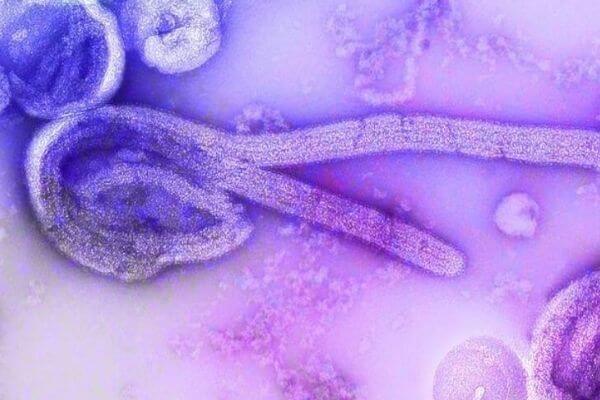
The Biosecurity Law (生物安全法) was promulgated on 17 Oct. 2020 and will enter into force on 15 Apr. 2021. In the post-COVID-19 age, this Law lays a foundation for setting up a legal regime of biosecurity in China.
On 17 Oct. 2020, China promulgated its first Biosecurity Law. There are 88 articles in total, which aim to prevent and respond to the threat of dangerous biological factors and related factors, to ensure that the people’s life and the ecosystem are in a relatively safe state, as well as to promote the stable and healthy development of biotechnology.
This Law was first deliberated by the Standing Committee of the National People’s Congress (NPC), China’s legislature, as early as October 2019. After the outbreak of the COVID-19, the Chinese government accelerated its legislation process.
On 14 Feb. 2020, three weeks after the Wuhan’s lockdown, President Xi Jinping said at a conference, “We should incorporate biosecurity into the national security system, systematically plan the national biosecurity risk prevention and control system, and comprehensively enhance the national biosecurity governance capability. We should promulgate the biosecurity law as soon as possible, and accelerate the construction of national biosecurity laws and regulations and the guarantee system.” The conference was held at the 12th Session of the Central Committee for Deepening Reform of the Communist Party of China, with the theme of “improving the system and mechanism of major epidemic prevention and control, and improving the national public health emergency administration system”.
Later, in April 2020, the NPC Standing Committee conducted a second deliberation on the draft of this Law, and formally passed it in October. This Law draws on the experience of the Chinese government in dealing with the COVID-19, and will become a fundamental, comprehensive, systematic, and leading law in the field of biosecurity in China.
The gist of this Law is as follows:
1. Biosecurity risk prevention and control system
(1) The central national security leading agency is responsible for the decision-making of national biosecurity work and the establishment of a national biosecurity synergy mechanism (Article 10). The synergy mechanism is composed of the competent departments of health, agriculture and rural areas, science and technology, and foreign affairs under the State Council and relevant military organs (Article 11).
(2) The Chinese government will establish biosecurity risk monitoring and early warning system (Article 14), biosecurity risk investigation and assessment system (Article 15), biosecurity information sharing system (Article 16), biosecurity information release system (Article 17), biosecurity directory and list system (Article 18), biosecurity standard system (Article 19), biosecurity review system (Article 20), biosecurity emergency system (Article 21), biosecurity incident investigation and traceability system (Article 22), biological entry access system (Article 23), and overseas major biosecurity incident response system (Article 24).
2. Prevention and control of major new infectious diseases and animal and plant epidemics
(1) Specialized institutions shall take the initiative to monitor infectious diseases and animal and plant epidemics (Article 28). Units or individuals shall report infectious diseases, animal, and plant epidemics in a timely manner (Article 29). The Chinese government will establish an international cooperation network for the prevention and control of infectious diseases and animal and plant epidemics (Article 31).
(2) The Chinese government will protect wild animals, strengthen animal epidemic prevention, and prevent the spread of infectious diseases of animal origin (Article 32).
3. Supervision of biotechnology research
(1) It is forbidden to engage in research, development, and application of biotechnology that endangers public health, biological resources, ecosystem, and biodiversity, etc. (Article 34).
(2) The State divides biotechnology research and development activities into three categories: high risk, medium risk, and low risk, and adopts different supervision methods therefor (Article 36). High-risk and medium-risk activities shall be carried out by legally incorporated organizations established within the territory of China, and shall be approved or put on record (Article 38).
(3) The clinical research of new biomedical technology should be subject to ethical review. (Article 40)
4. Supervision of pathogenic microorganism laboratory
(1) The Chinese government will formulate a unified biosecurity standard for pathogenic microorganism laboratories (Article 42), and implement classified management of pathogenic microorganisms (Article 43). On this basis, the Chinese government will implement a hierarchical administration on pathogenic microorganism laboratories according to the level of biosecurity protection for pathogenic microorganisms (Article 45).
(2) For pathogenic microorganisms that have not been found or have been declared to be eliminated by China, relevant experiments shall not be conducted without approval. (Article 46)
(3) The laboratory should prevent laboratory animals from escaping, and conduct harmless disposal after using them, and should not put them into the market (Article 47).
(4) The high-level pathogenic microorganism laboratory should accept the supervision of the public security organs and other departments on its security work, so as to prevent the leakage, loss, theft, and robbery of highly pathogenic microorganisms (Article 49).
5. Administration of human genetic and biological resources
(1) The Chinese government enjoys sovereignty over Chinese people’s genetic and biological resources (Article 53).
(2) The collection, preservation, international research or export of important human genetic resources shall be subject to the approval of the government (Article 56).
(3) No unit or individual may introduce, release or discard alien species without approval (Article 60).
6. Prevention of bioterrorism and biological weapons threat
(1) It is prohibited to develop, manufacture or otherwise acquire, store, possess and use biological weapons (Article 61).
(2) The Chinese government will issue a list of organisms, biotoxins, equipment or technologies that can be used in bioterrorism and the manufacture of biological weapons. (Article 62)
(3) The Chinese government and the army will adopt such means as monitoring and investigation, and take necessary preventive and disposal measures (Article 63).
Photo by CDC (https://unsplash.com/@cdc) on Unsplash
Contributors: China Laws Portal Team









